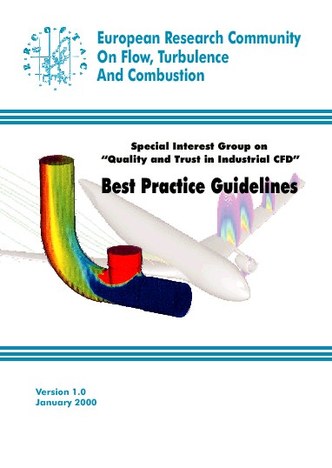Best Practice Guidelines for Conducting CFD Simulations
CFD (Computational Fluid Dynamics) simulations are powerful tools used to model fluid flow in various industrial systems. However, due to the complexity of these systems, there is significant potential for errors and uncertainty. Best practice guidelines have been established to help minimize these issues and ensure reliable results.
1. AIAA Guidelines (1998):
- Focus on Complex systems in CFD.
- Verification & Validation: Emphasizes the importance of using high-quality benchmark solutions and experiments to validate CFD models for specific instances. It suggests that validation for new, real-life problems should rely on high-quality experimental data. When data is limited, peripheral knowledge (e.g., fluid dynamics fundamentals, existing designs) can aid validation.
- Building Block Approach: For complex systems, break down the problem into simpler sub-systems. Start with well-validated simple unit problems and progressively increase complexity. Compare CFD results with experimental data at each stage to refine the model. This method ensures that lessons learned from simpler problems are applied to more complex ones.
2. ERCOFTAC Guidelines (2000):
- Focus on Less complex flow problems, particularly single-phase fluid flow and heat transfer.

- Error and Uncertainty Management: Provides methods to quantify and minimize errors and uncertainties in simulations. It includes an extended section on classical turbulence models based on Reynolds-averaged Navier-Stokes equations.
- Practical Implementation: Designed for less experienced users with checklists to guide CFD modelling. Includes eight case studies to demonstrate the application of guidelines and achievable accuracy in different flow scenarios.
Importance of Adherence to Guidelines:
- Ensures Reliability: Following these guidelines helps in reducing errors and uncertainties, making the CFD results more trustworthy.
- Increases Confidence: Adherence to best practices builds confidence in the simulation results, which is crucial when applying CFD to industrial problems where accuracy is vital.
- Systematic Approach: The guidelines provide a structured approach to modelling, ensuring that the complexity of the system is managed effectively, leading to more reliable predictions.
It is essential to follow the AIAA and ERCOFTAC guidelines to achieve accurate and reliable CFD results, especially when dealing with complex industrial systems. These guidelines help in building a solid foundation, progressively increasing the complexity of models while ensuring that each step is validated against experimental data.
Why Adherence to These Guidelines Is Crucial
- Minimizes Errors: These guidelines help identify and minimize sources of errors, improving the overall accuracy of CFD simulations.
- Validation & Verification: By ensuring proper validation and verification processes, the guidelines help in confirming that the CFD model accurately represents the real-world scenario.
- Increases Trust in Results: Adhering to these guidelines builds confidence in the results, making them more acceptable for decision-making in industrial applications.
- Efficient Resource Use: Following a structured approach prevents the waste of resources by avoiding unnecessary complexity and focusing efforts on well-validated models.